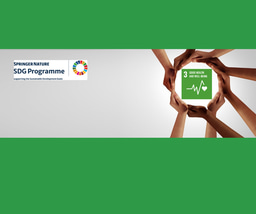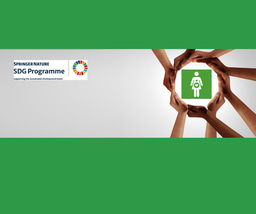World AIDS Day 2024
Published in General & Internal Medicine

Every year on 1st December, we come together to observe World AIDS Day. This event is dedicated to raising awareness about HIV/AIDS, commemorating those who have died from AIDS-related illnesses and reaffirming our global commitment to ending the HIV epidemic. Established in 1988 by the World Health Organization (WHO), it has become one of the most widely recognised international health days and its significance has only grown as the fight against HIV continues.
This year's theme is "Take the rights path: My health, my right!” and the WHO is calling on global leaders and citizens to help address the inequalities promoting the pandemic by championing the right to healthcare, particularly in marginalised communities.
Understanding the HIV pandemic
In 2023, an estimated 39.9 million people were living with HIV globally, with an estimated 1.3 million people acquiring the disease in the same year. The fight against HIV/AIDS remains one of the most critical global health challenges and, despite decades of progress, barriers still exist to accessing treatment, education, and social support. As part of Sustainable Development Goal 3, the United Nations and the WHO aim to minimise these barriers in order to end the epidemic of AIDS by 2030.
In her blog, Sophie Gray discusses the history of the pandemic, highlighting the first case recorded in 1981 by the Center for Disease Control and discussing the cultural impact observed as HIV spread across communities, leading to extensive misinformation and homophobia. The blog examines the role of gay rights movement activists in campaigning for HIV/AIDS to be recognised as a human rights issue. They strove to ensure marginalised communities could receive necessary healthcare and to reduce the stigma of AIDS. Dr Darrow’s blog tracks the medical community’s response to AIDS from its emergence to the present day and highlights current efforts to reach the target of zero preventable deaths from AIDS by 2030.
Stigma and HIV: An Invisible Barrier to Health Equity
The collaborative efforts of researchers, healthcare professionals, and communities in combating the stigma associated with HIV, as well as developments in treatment and prevention, have improved some people’s views of the disease. In his blog about HIV stigma, Dr Eriksson explains how HIV used to be understood as a terminal illness; while still a chronic and uncurable disease, treatment is now available to manage symptoms. Despite this, stigma still remains. Dr Beth Meyerson discusses syringe access in pharmacies in Arizona in a recent blog. She highlights that despite extensive evidence showing that access to sterile syringes reduces HIV transmission, it has become increasingly difficult to purchase syringes without a prescription in pharmacies, with many seemingly deciding to deny selected services to a portion of their clientele based on either stigma or their disapproval of its intended use.
Further, minority status can impact the level of stigma experienced by people living with HIV (PLWH). In her blog, Dr Ewa Gruszczyńska discusses the individual impact of each minority status (gender, sexual orientation, and HIV diagnosis) on stigma. She found, perhaps surprisingly, that heterosexual individuals with HIV, when they constitute a minority within this population, may experience additional stigma beyond those faced by PLWH in general. This challenges long-standing societal perceptions that have primarily associated HIV infection with men of homosexual orientation. Among women diagnosed with AIDS, those with a heterosexual orientation were found to experience the most intense levels of stigma. Understanding these dynamics is crucial for reducing stigma and enhancing support for PLWH.
Advances in HIV Treatment and Prevention
Though many communities still face stigma for their HIV status to this day, advances in HIV treatment have been plentiful. Professor Aguinaldo R. Pinto, Retroviruses Section Editor for Virology Journal, discusses this progress in a recent Q&A. He emphasises the importance of antiretroviral therapy (ART) and how we have progressed from limited treatment options with significant side effects to effective and easier-to-tolerate regimes, including combination therapies and long-acting injectable ART.
Dr Wedderburn explains the importance of monitoring and treating existing HIV cases in her blog, which discusses the neurodevelopment of children born to mothers living with HIV. These children may be more at risk of poorer health, growth, and developmental outcomes; for example, HIV exposure may impact a child’s language development. Observation and intervention strategies are important to minimise the impact that HIV can have on groups such as children.
In 2014 the UN set ‘90-90-90' targets to ensure that 90% of all PLWH are diagnosed, 90% of those receive treatment, and over 90% of those reach viral suppression. Trenton White and the ISGlobal Public Health Liver Group stress that we should also consider a ‘fourth 90,’ which focuses on improving quality of life for PLWH. White encourages policymakers to prioritise funding to integrated chronic care services, to tackle other chronic conditions experienced by PLWH, such as liver disease. This would lead to more PLWH achieving an overall better quality of life.
Whilst detection and treatment options have advanced over the last two decades, the ultimate goal of eradicating HIV and its impact is more difficult to achieve. Prof Pinto discusses a promising genome editing tool called CRISPR, which may in the future help to inactivate and even eradicate HIV-1. This offers hope towards achieving the World Health Organization's SDG target 3.3 which aims to end the epidemic of AIDS by 2030.
We thank our editors, authors and colleagues for taking the time to share their research and insights into HIV and AIDS for World AIDS Day 2024. Explore their work further by clicking the links below.
Communities Blogs:
World AIDS Day: Q&A with Dr Aaloke Mody - Aaloke Mody
World AIDS Day 2024 - A brief history - Sophie Gray
World AIDS Day 2024-- From "Ignorans" to "Sciens" - William Darrow
Development of a short HIV stigma scale - Lars E. Eriksson
Time for a syringe standing order: Important next step to assure syringe access to prevent HIV and hepatitis C. - Beth Meyerson
The Intersection of Minority Status and HIV/AIDS Stigma: Being Different Among the Different – Ewa Gruszczyńska
World AIDS Day 2024 - Q&A with Aguinaldo R. Pinto - Joe Scott-Oliver and Aguinaldo Pinto
Association of in utero HIV exposure with child brain structure and language development: a South African birth cohort study - Catherine Wedderburn
Prioritising liver health on World AIDS Day: a conversation on advancing care for people living with HIV - Trenton White





Please sign in or register for FREE
If you are a registered user on Research Communities by Springer Nature, please sign in